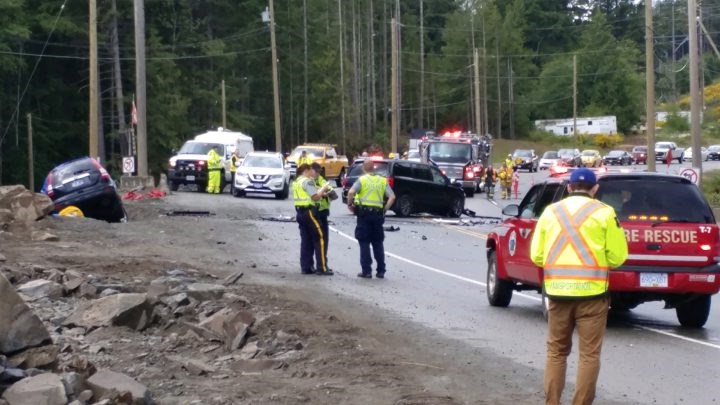Traffic fatalities have decreased substantially both in Greater Victoria and on the Island as a whole over the past 15 years.
There were 25 traffic fatalities in the capital region in 2003. That dropped to 17 in 2010 and to six last year.
Of those six, three were motorcyclists, and two of those were because of cars turning right in front of them, the members of the Capital Regional District’s transportation committee heard Wednesday.
This year to date there have been three traffic fatalities. The numbers are for the capital region, including the Malahat to Aspen Road.
“The Island as a whole is actually doing as well as anybody or better than anybody in B.C.,” said Barb McLintock, the B.C. Coroners Service representative on the CRD Traffic Safety Commission. She noted that Island traffic fatalities have decreased about 30 per cent from 64 in 2007 to 41 in 2016.
That compares with decreases over the same period to 49 from 54 in Metro Vancouver; 55 from 68 in the northern region; 74 from 107 in the Fraser region and 98 from 130 in the Interior.
“The numbers back up that we have far more crashes than we have fatalities, bottom line,” said Chris Foord, the commission’s vice-chairman.
McLintock said the number of fatalities is low enough “that we’ve begun to be able to do some work … on injuries like whiplash, protecting your neck.”
“Your ill-adjusted neck rest is not going to kill you in a crash, but it’s certainly is likely to make you extremely uncomfortable for some time.”
The commission also will be focusing some of its awareness campaigns on active transportation, she said.
“In the coroner’s service, [what] we find in terms of fatalities, not just in this region but across B.C. and across Canada and, in fact, across North America, is overall fatality rates have been going very nicely overall in the right direction, but most of that decrease is drivers and passengers,” McLintock said.
“It’s not pedestrians.”
The traffic safety commission, in operation since 1986, promotes traffic safety through researching, developing and funding initiatives such as anti-distracted driving messaging, and campaigns to encourage pedestrians and cyclists to be more visible.
Recently, it has advocated for the installation of point-to-point speed cameras on the Malahat to help reduce speed-related crashes. It has also lobbied for other safety measures, such as median barriers.
Foord urged committee members to seek an update from Public Safety Minister Mike Farnworth on the point-to-point cameras, which measure how long it takes a vehicle to travel between two points and calculate the average speed.
“The minister said he would consider it if there was public support, and we certainly feel that there is public support for that,” Foord said.
Numbers show active transportation is increasing and the reach of safety campaigns in those areas have to be expanded, he said.
McLintock said the coroners service’s data show a “very high proportion” of urban pedestrian crashes occur at intersections.
“I think in Vancouver it was something like 87 per cent, and we weren’t very far behind,” she said.
The commission is also considering a media campaign to help motorists to understand roundabouts.



